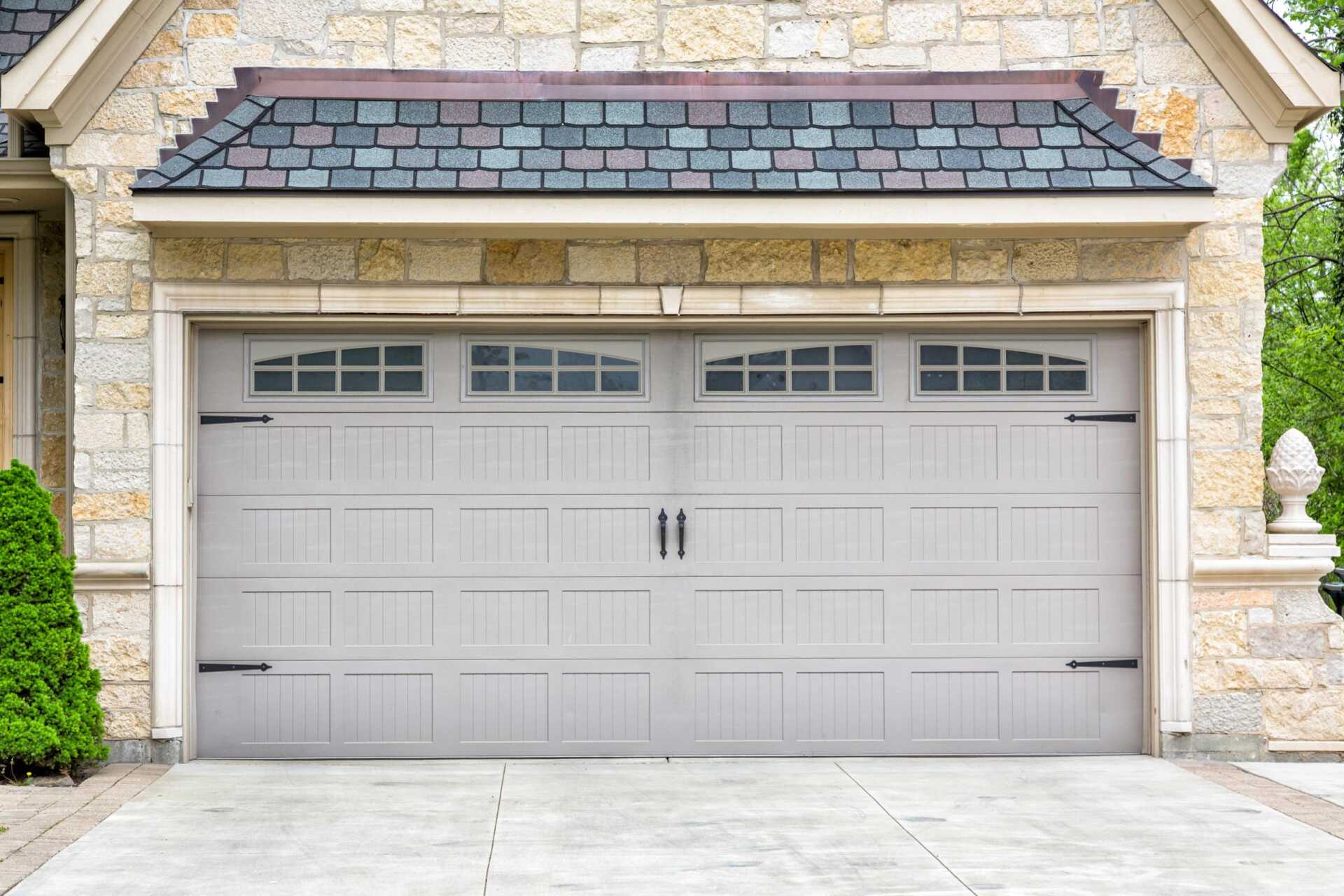
Contents
Replacing your garage door opener might seem straightforward, but it’s vital to follow best practices to ensure everything runs smoothly. Poor installation or improper choices can lead to operational failures or safety hazards. By understanding the essentials, you can greatly enhance the performance and lifespan of your opener. So, what are the key considerations you need to keep in mind before starting this task?
Key Takeaways
- Following best practices ensures safe installation and operation, reducing the risk of accidents and injuries during opener replacement.
- Adhering to manufacturer instructions prevents compatibility issues, ensuring the opener functions correctly with the existing garage door.
- Regular maintenance and inspections enhance the longevity and performance of the opener, minimizing the likelihood of costly repairs.
- Utilizing proper tools and techniques improves efficiency during the replacement process, saving time and effort.
- Implementing safety features and protocols promotes reliable operation, protecting your household from potential hazards associated with malfunctioning openers.
Understanding the Importance of Opener Replacement
Understanding the importance of opener replacement is crucial for maintaining the functionality and safety of your garage door system. Regularly evaluating the opener’s lifespan helps you identify when it’s time for a replacement. Most openers last around 10 to 15 years, but factors like usage and maintenance can greatly impact this timeframe.
By prioritizing maintenance, you can extend the life of your opener and enhance its performance. Simple tasks like lubricating moving parts and checking wiring connections can prevent unexpected failures.
Recognizing signs of wear, such as unusual noises or inconsistent operation, indicates that replacement is necessary. Acting promptly can save you from costly repairs and ensure your garage door operates smoothly.
When you take these steps, you contribute to a safer environment for yourself and your family, reinforcing the sense of belonging within your home. Proper opener replacement practices cultivate reliability and peace of mind in your everyday life.
Safety Considerations During Opener Replacement
When replacing your opener, ensuring safety is essential.
You’ll need the proper tools, follow electrical safety precautions, and employ correct heavy lifting techniques to prevent accidents.
Prioritizing these aspects protects you and ensures a smoother replacement process.
Proper Tools Required
Before you start the opener replacement process, gathering the right tools is vital for ensuring both efficiency and safety. Your tool selection should include a socket set, screwdrivers, pliers, and a torque wrench. Each tool plays an important role in making your task easier and reducing the risk of injury.
Don’t forget to check the condition of your tools; proper tool maintenance extends their lifespan and ensures they function correctly. Inspect for wear and tear, and clean them after use to prevent rust and damage.
Electrical Safety Precautions
Ensuring electrical safety is a key part of the opener replacement process, particularly after gathering the proper tools. Before you start, always disconnect the power supply to prevent any accidental shocks.
Check for proper electrical grounding to ensure your system operates safely and efficiently. This minimizes the risk of electrical faults that could lead to damage or injury.
When reassembling the opener, use circuit protection devices to safeguard against surges or overloads. These precautions protect you and extend the lifespan of your opener.
By prioritizing these electrical safety measures, you create a secure environment for yourself and anyone else involved in the replacement process.
Heavy Lifting Techniques
While replacing an opener, it’s crucial to employ proper heavy lifting techniques to prevent injury and ensure efficiency.
Here are four key considerations:
Assess Weight: Know the opener’s weight and verify you can handle it comfortably.
Proper Lifting: Bend your knees, keep your back straight, and lift with your legs to maintain proper lifting posture.
Weight Distribution: Distribute the weight evenly between both hands to enhance stability and control.
Use Assistance: Don’t hesitate to ask for help or use tools like dollies or straps for heavier units.
Choosing the Right Type of Garage Door Opener
When choosing the right type of garage door opener, you need to take into account various factors, including the specific types available on the market.
Pay attention to power and efficiency ratings, as these will impact both performance and energy consumption.
Additionally, evaluate safety features to ensure reliable operation and protection for your household.
Types of Garage Openers
Choosing the right type of garage door opener is essential for ensuring ideal performance and security. Here are the main options to evaluate:
Chain Drive: Reliable and affordable but can be noisy.
Belt Drive: Offers quiet operation, ideal for garages near living spaces.
Screw Drive: Minimal moving parts mean less maintenance, but they may require more power.
Jackshaft and Wall Mounted Openers: Save overhead space and are great for high ceilings.
For modern convenience, assess smart openers with battery backup for added reliability.
Each type caters to different needs, ensuring you find the perfect fit for your lifestyle while enhancing your garage’s functionality and security.
Power and Efficiency Ratings
Understanding power and efficiency ratings is crucial for selecting the right garage door opener that meets your needs.
Power efficiency directly affects how well your opener operates while minimizing energy consumption. Look for models with higher efficiency ratings, as they’ll perform better and lead to significant energy savings over time.
Consider the horsepower (HP) rating, which indicates how much power the opener generates. A higher HP is ideal for heavier doors and ensures smoother operation.
Additionally, some openers feature smart technology that enhances power efficiency by adjusting performance based on usage patterns.
Safety Features to Consider
How can you ensure your garage door opener prioritizes safety? By selecting a model equipped with essential safety features, you’ll ensure peace of mind for you and your family.
Here are four critical aspects to evaluate:
Safety Sensors: These detect obstacles in the door’s path, preventing accidents.
Emergency Release: This allows you to manually operate the door during power outages, assuring accessibility.
Auto-Reverse Mechanism: If the door encounters an obstruction while closing, it will automatically reverse.
Rolling Code Technology: This enhances security by changing the access code each time you use the remote.
Choosing a garage door opener with these features enhances safety and fosters a secure environment for your loved ones.
Tools and Materials Needed for Replacement
When replacing a garage door opener, having the right tools and materials on hand is essential for a successful installation.
Start with a thorough tools checklist that includes a power drill, screwdrivers, a level, pliers, and a wrench. These tools will help you efficiently remove and install the opener.
Next, focus on material selection. Verify you have the specific mounting hardware compatible with your new opener, as well as safety cables and brackets if needed.
It’s also wise to have a sturdy ladder for reaching higher components safely.
Step-by-Step Guide to Replacing Your Opener
Before you begin replacing your garage door opener, make certain you’ve gathered your tools and materials. Knowing the various opener types and following some installation tips will make the process smoother.
Disconnect Power: Start by unplugging the existing opener to ensure safety.
Remove Old Opener: Detach the old unit from the mounting brackets and track, taking care not to damage the garage structure.
Install New Opener: Follow the manufacturer’s instructions for your specific opener type, ensuring all parts are securely attached.
Reconnect Power: Plug in the new opener and test its functionality with the remote and wall switch.
Common Mistakes to Avoid in Opener Replacement
Replacing your garage door opener can be straightforward, but several common mistakes can complicate the process and lead to safety issues. One of the most frequent common replacement errors is neglecting to read the manufacturer’s instructions thoroughly. Skimming over these details can cause you to miss essential installation steps.
Another pitfall is failing to measure your garage door properly before selecting an opener. This oversight can result in compatibility issues and poor functionality.
When identifying installation pitfalls, be wary of improper alignment. An unaligned opener can lead to operational failure and potential hazards.
It’s also important to avoid overlooking safety features, such as the auto-reverse mechanism, which protects against accidents.
Testing the New Opener for Optimal Performance
Once you’ve installed your new garage door opener, it’s crucial to test it thoroughly to confirm peak performance. Proper performance testing ensures your opener functions seamlessly and safely.
Follow these steps for effective testing:
Check the door’s balance: Disconnect the opener and manually lift the door; it should remain open halfway.
Test the safety reverse: Place a small object under the door and close it to confirm it reverses upon contact.
Adjust sensitivity settings: Use the adjustment techniques outlined in your manual to fine-tune the opener’s responsiveness.
Verify remote functionality: Test all remotes and wall controls from various distances to confirm consistent operation.
Regular Maintenance Tips for Your Garage Door Opener
Regular maintenance is essential for ensuring your garage door opener operates efficiently and lasts for years. To maintain peak performance, start by regularly inspecting the opener and its components.
Check for any loose screws or bolts, and tighten them as needed. Lubricate the moving parts, such as the chain or belt, with a silicone-based lubricant to reduce friction and wear.
Additionally, test the safety features by verifying the auto-reverse function works properly; this is vital for safety. Clean the photo-eye sensors to prevent obstructions that could interfere with operation.
Also, inspect the garage door for wear and tear, as issues with the door can impact the opener’s lifespan.
Finally, create a routine schedule for these maintenance tasks—monthly or quarterly—to ensure consistent garage door maintenance and long-term reliability.
When to Call a Professional for Assistance
How can you determine when it’s time to call a professional for garage door opener assistance? Recognizing the signs of malfunction is essential for maintaining safety and functionality.
Here are four key indicators that suggest you should seek professional help:
Unresponsive Opener: If your opener doesn’t respond to remote commands or wall switches, it’s time to call.
Strange Noises: Grinding, screeching, or excessive rattling sounds can indicate serious issues.
Inconsistent Performance: If the door opens or closes unexpectedly, it’s a sign of malfunction.
Physical Damage: Visible cracks, dents, or worn components can compromise the system’s safety.
Review
Following best practices for garage door opener replacement is vital for safety and efficiency. Remember, “an ounce of prevention is worth a pound of cure.” You can avoid costly repairs and ensure reliable operation by choosing the right opener, using proper tools, and maintaining your system. Don’t hesitate to seek professional help when needed, as the right expertise can further enhance your garage door’s performance and longevity. Prioritize these practices for a safer, more convenient experience.
Recent Posts
Easy Steps for Replacing Your Garage Door Opener
Replacing your garage door opener can feel like tuning up an old car; a little
Optimal Tips for Replacing Your Garage Door Opener
When it’s time to replace your garage door opener, knowing where to start can make
Unseen Clues Your Garage Door Needs Fixing
Your garage door might show subtle signs that it needs attention, but you might not

